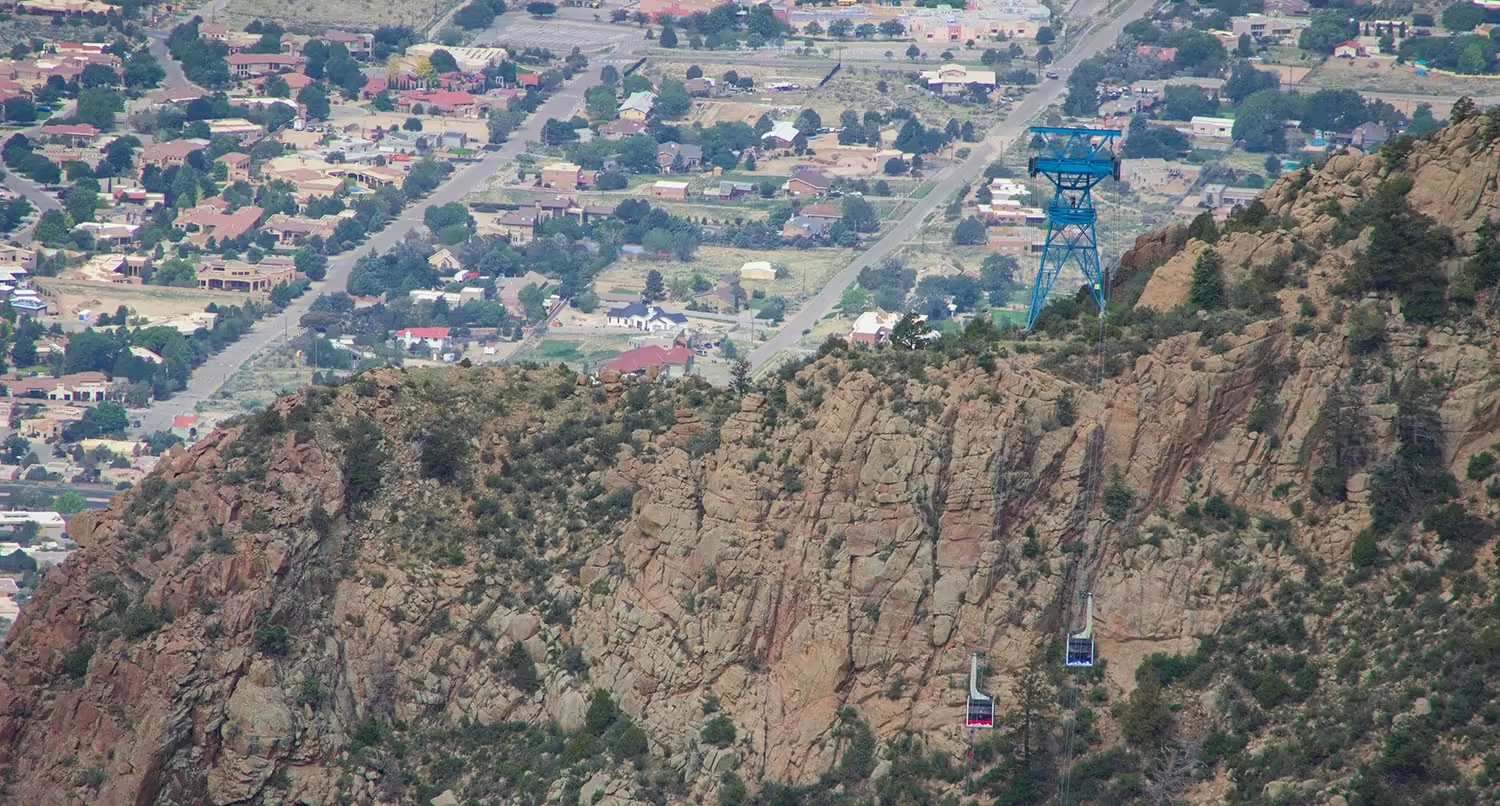Trip Report: Cumbres and Toltec Scenic Railroad
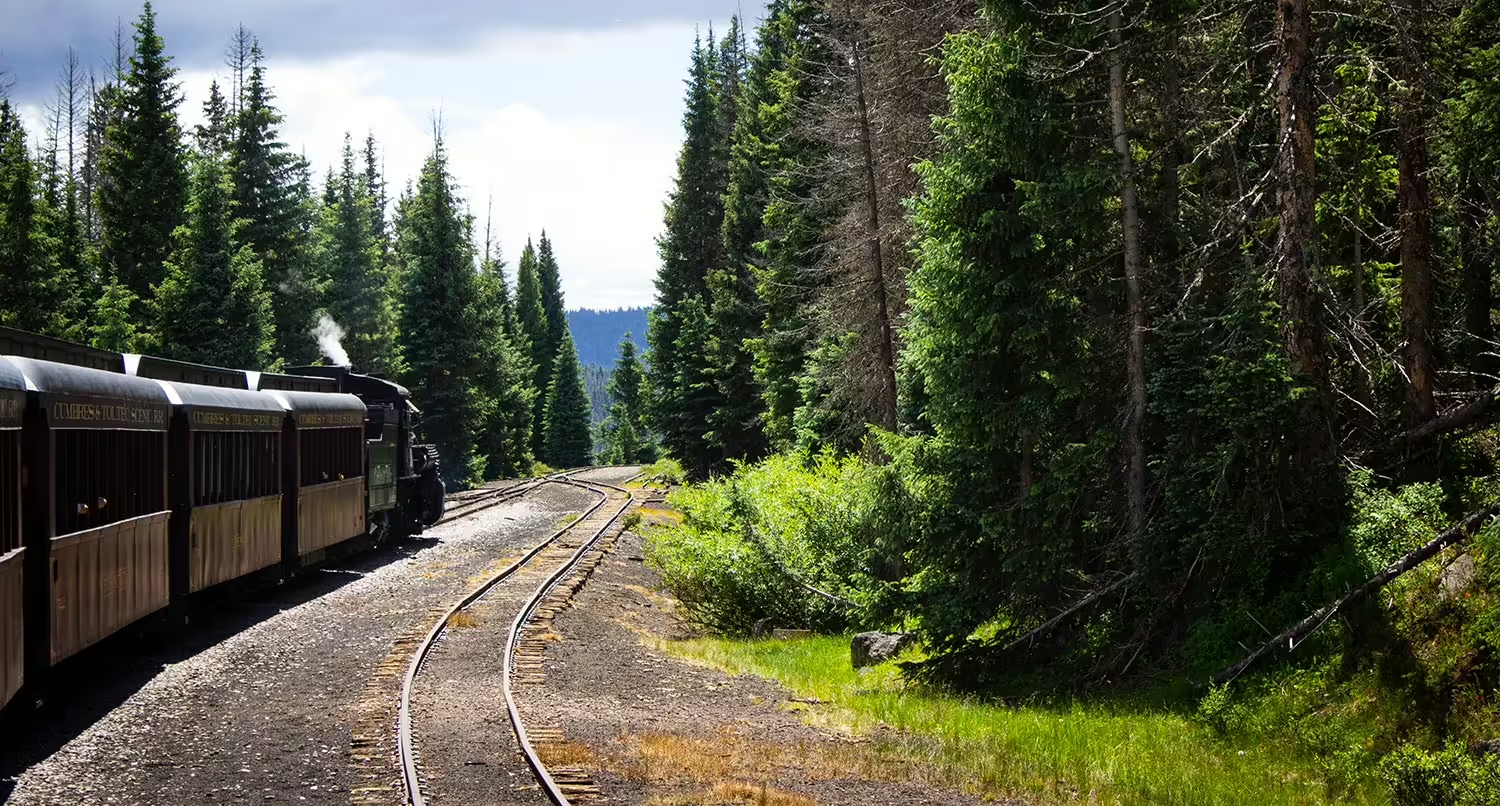
Originally built by the Denver and Rio Grande Western Railroad in 1881, the Cumbres and Toltec Scenic Railroad provides stunning views of the eastern portion of the San Juan Mountains.
The narrow gauge line runs 64 miles between Chama, New Mexico, and Antonito, Colorado, with trains pulled by the very same steam locomotives that pulled both passengers and freight over Cumbres Pass over 100 years ago.
After many years of knowing the line existed, we finally got the chance to ride it for ourselves a couple of years ago. And the experience was everything we thought it would be.
The views were spectacular, the ride was fantastic and learning the history of the line and the area from the docents that walked through the train was an added bonus.
Here’s how it all happened.
Walking Around Chama Station
We arrived at the station with plenty of time before boarding, which gave us ample time to walk around the station area and view the yard in Chama.
For the most part, the yard looks almost like it did when the D&RGW hauled passengers and freight through the San Juan Mountains between Alamosa and Durango, Colorado. There’s the red brick engine house, the coaling tower and the water tower for the steam engines and a yard full of restored cars.
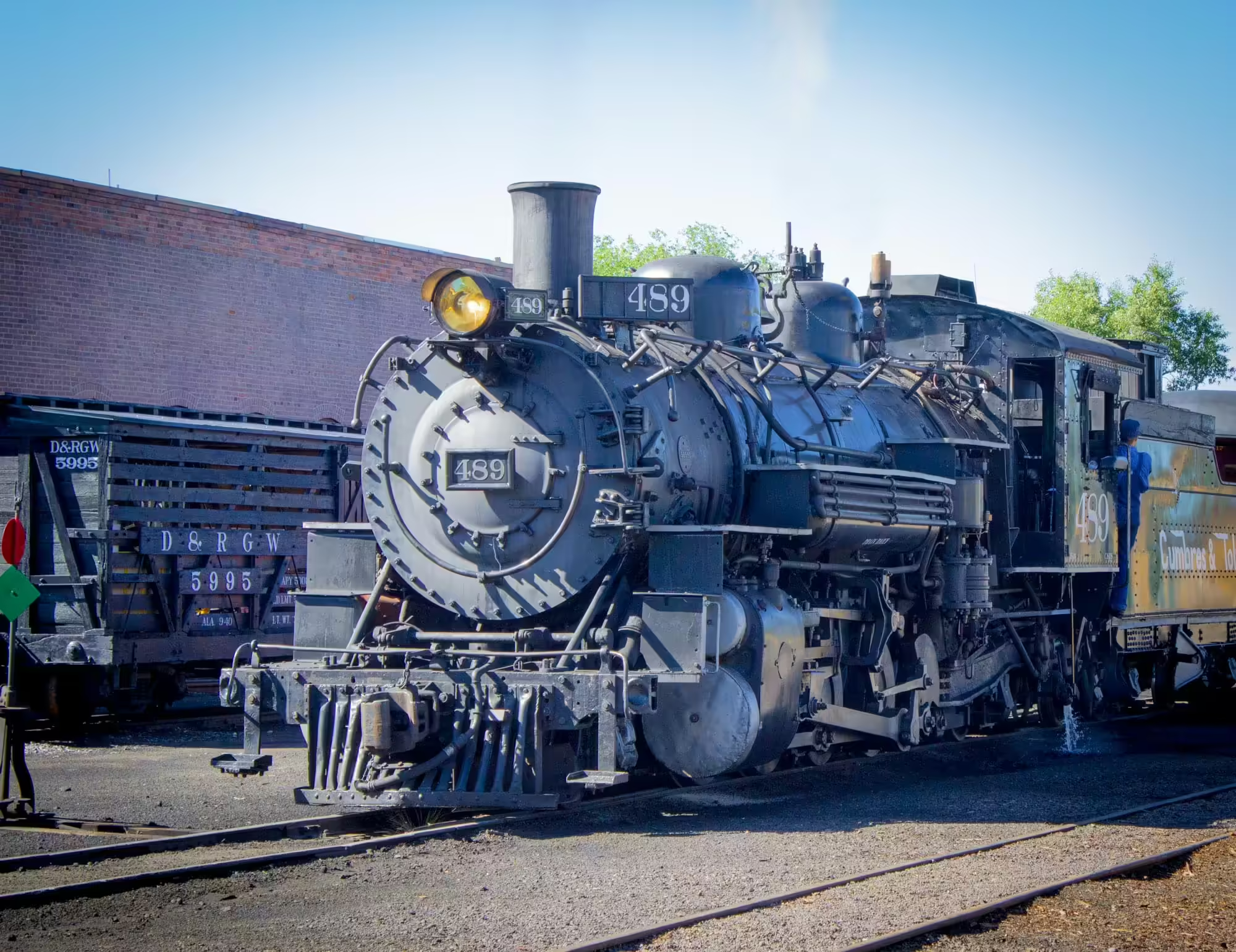

Behind the waiting area was a small gift shop that was full of various merchandise, railroad memorabilia and railroad books.
And on the main track was our train. Six coach cars and an open air gondola car in the middle with steam engine No. 489 leading.
Before long it was time to board the train and begin our adventure.
Climbing Over Cumbres Pass
The first half of the trip was simply amazing.
The railroad has to climb a little under 3,000 feet in nine miles to get over Cumbres Pass. That means the majority of our first half of the trip will be spent climbing four percent grades (meaning for every 100 feet of track we are gaining four feet of elevation), among the steepest in the United States.
After we left Chama and crossed Lobato Creek, we made our way back to the open air gondola car as the train began to tackle the grade.
The view back here was spectacular with a 360 degree view of the ride. We could see (and feel) the engine struggle at times to get the train up to the summit of the pass. Around us were lush green grass and trees with white puffy clouds overhead and the occasional herd of sheep, cows and wild horses.
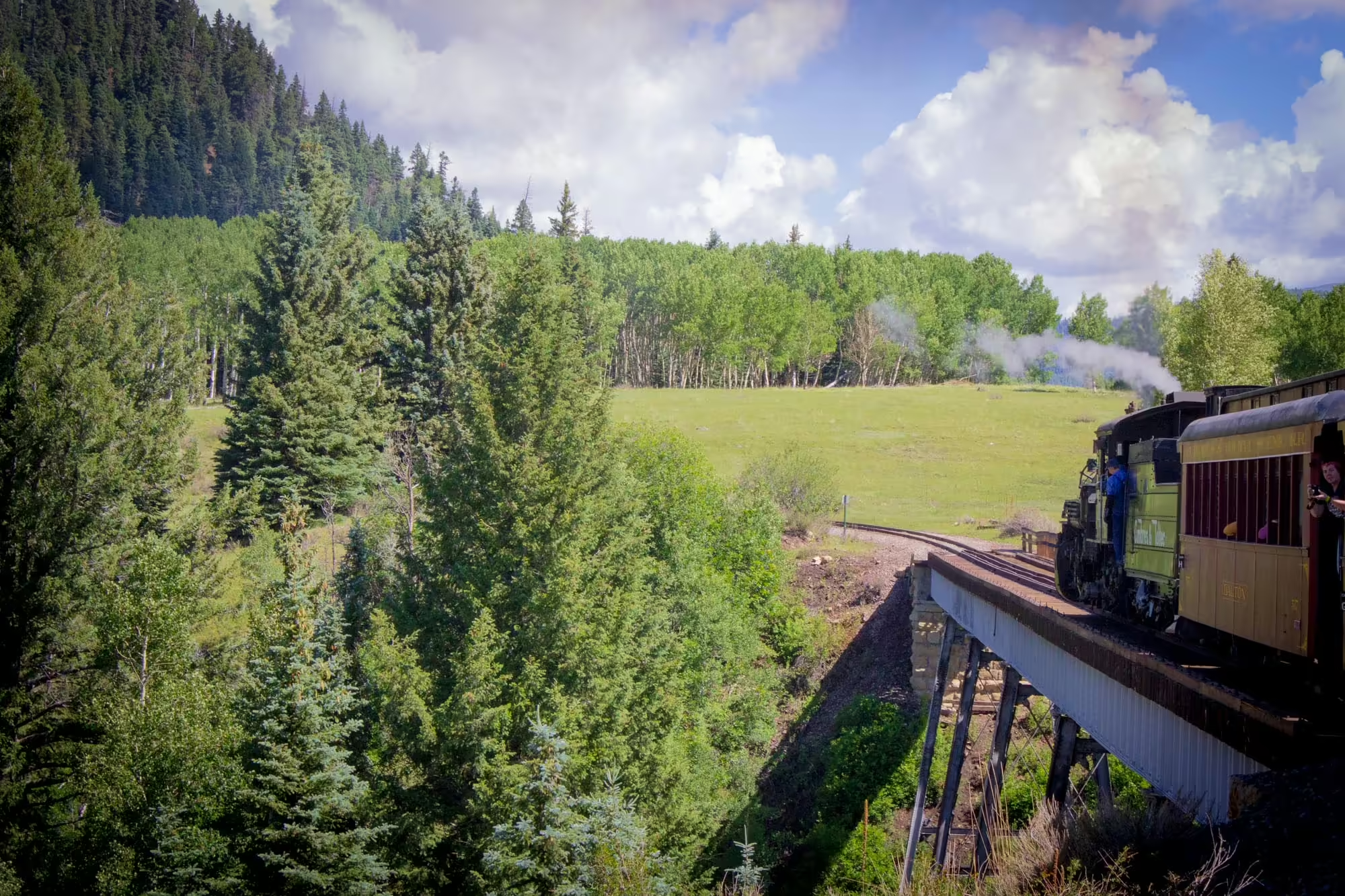
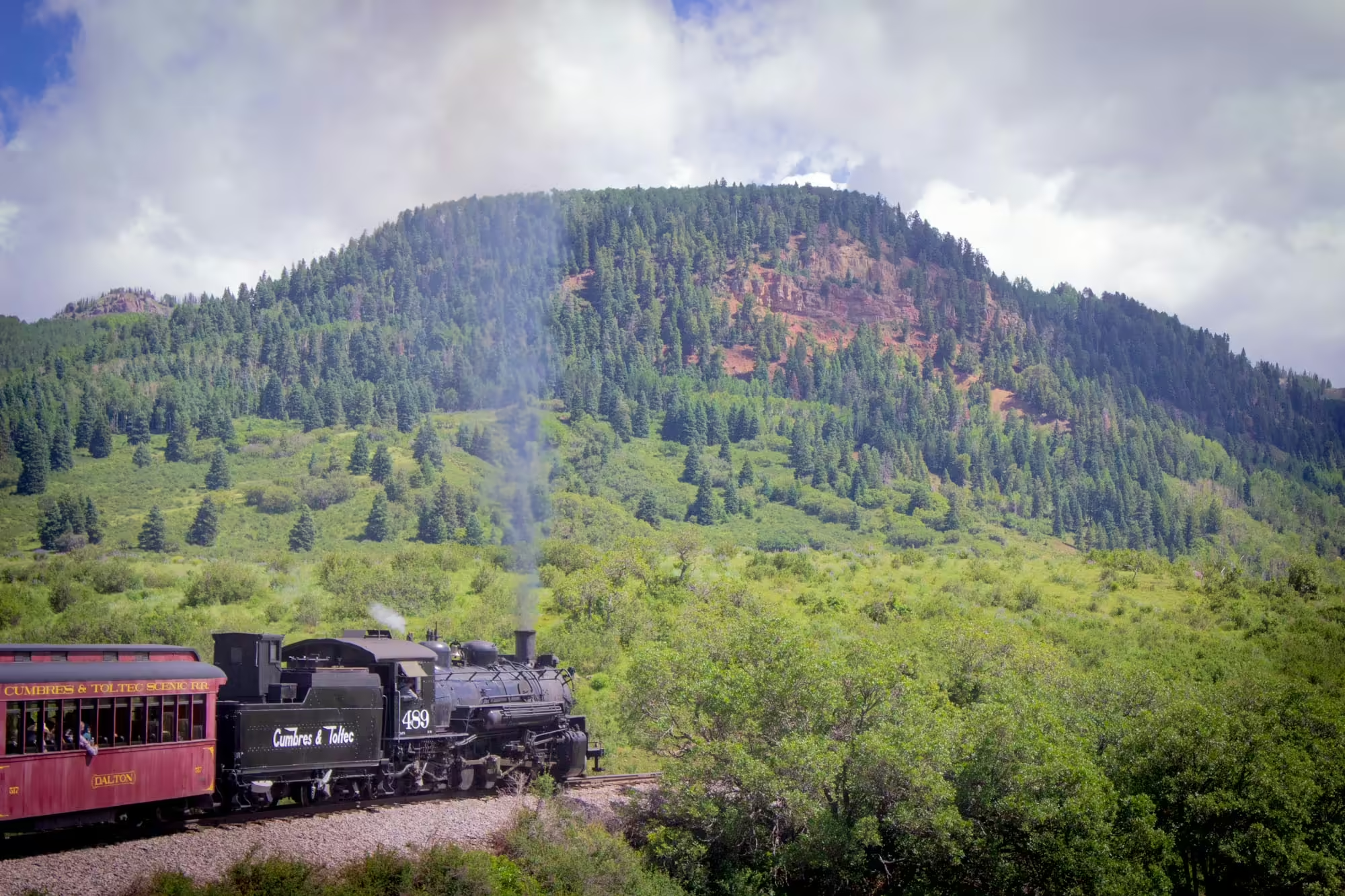
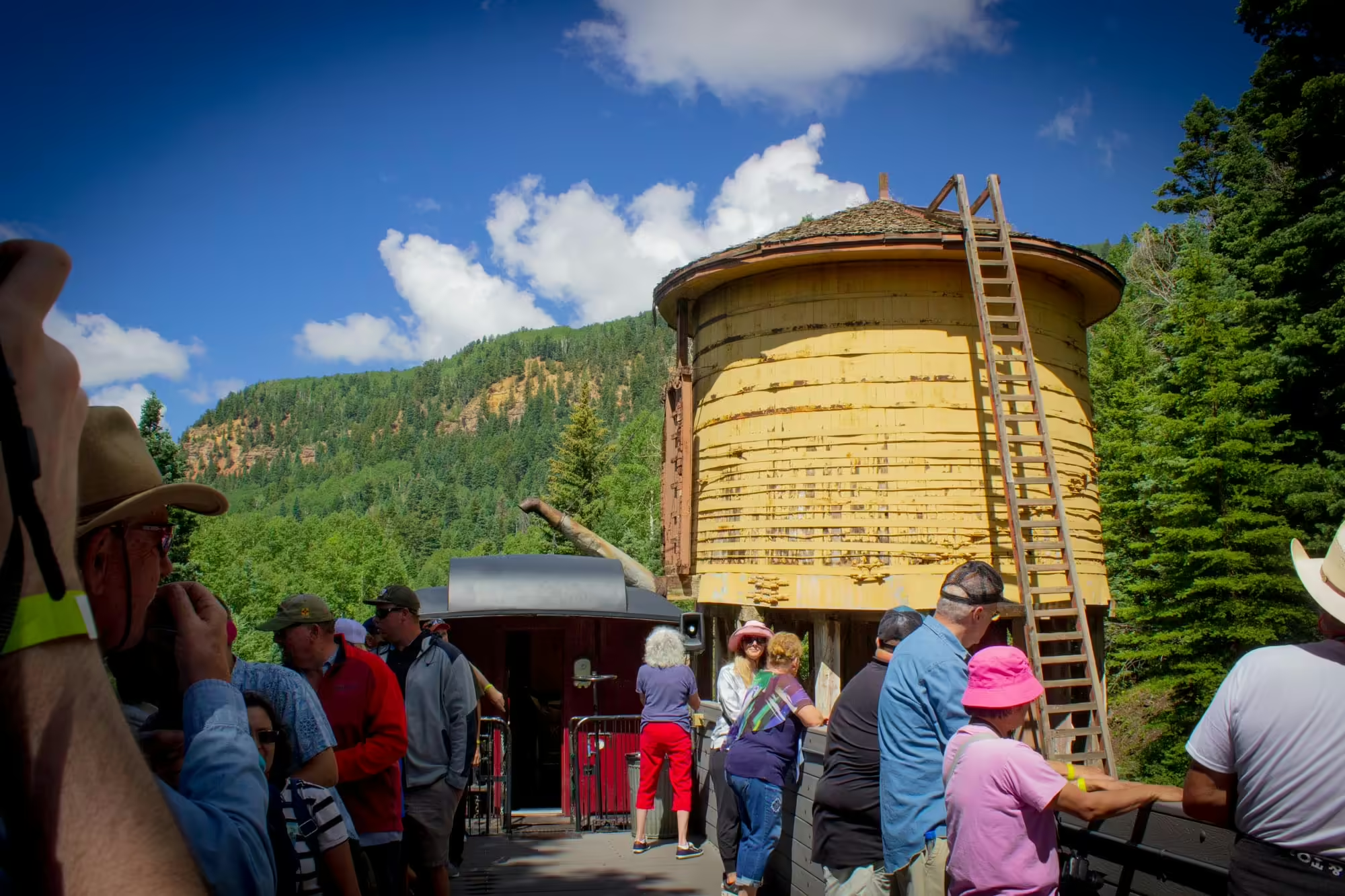
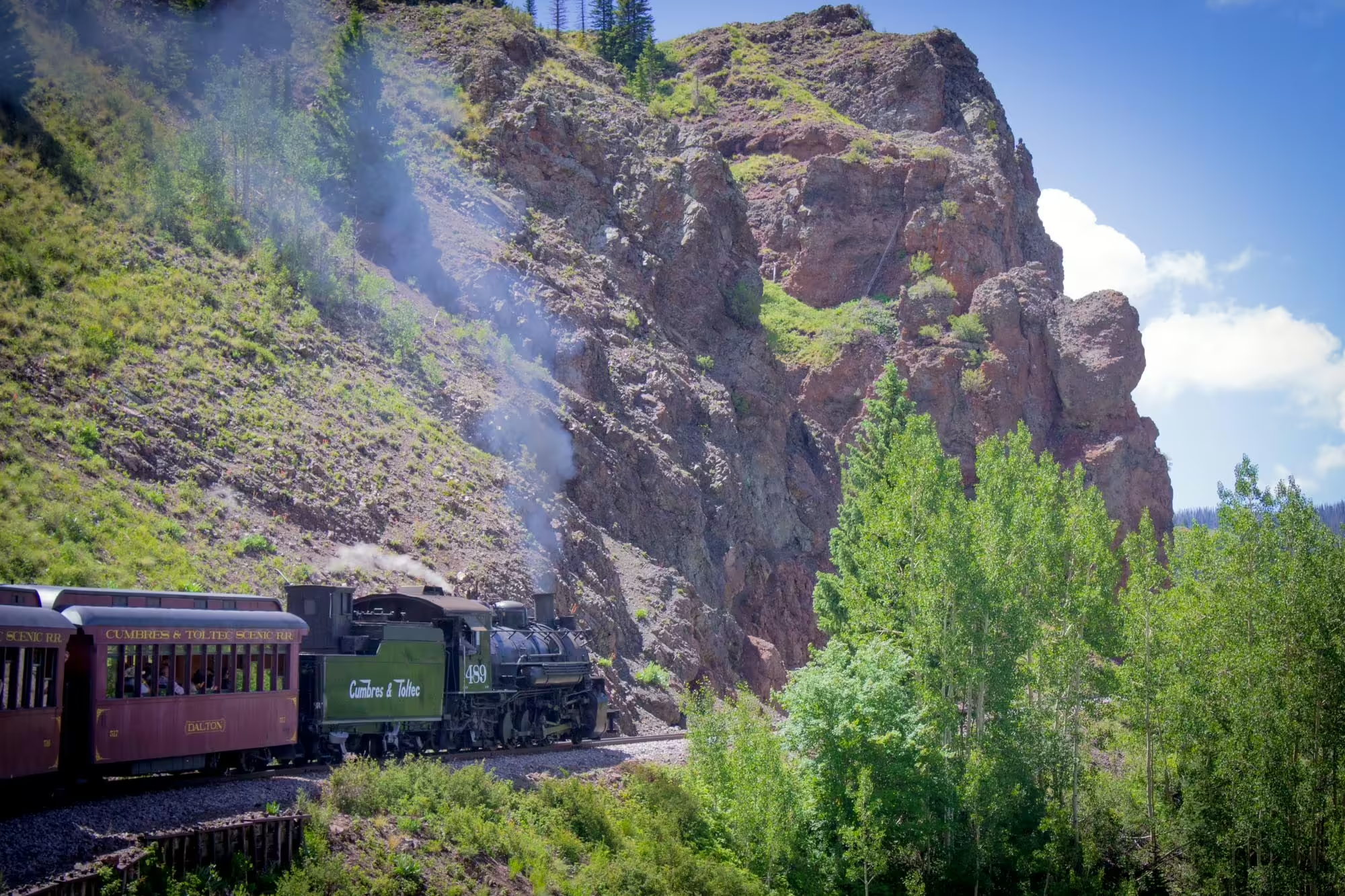
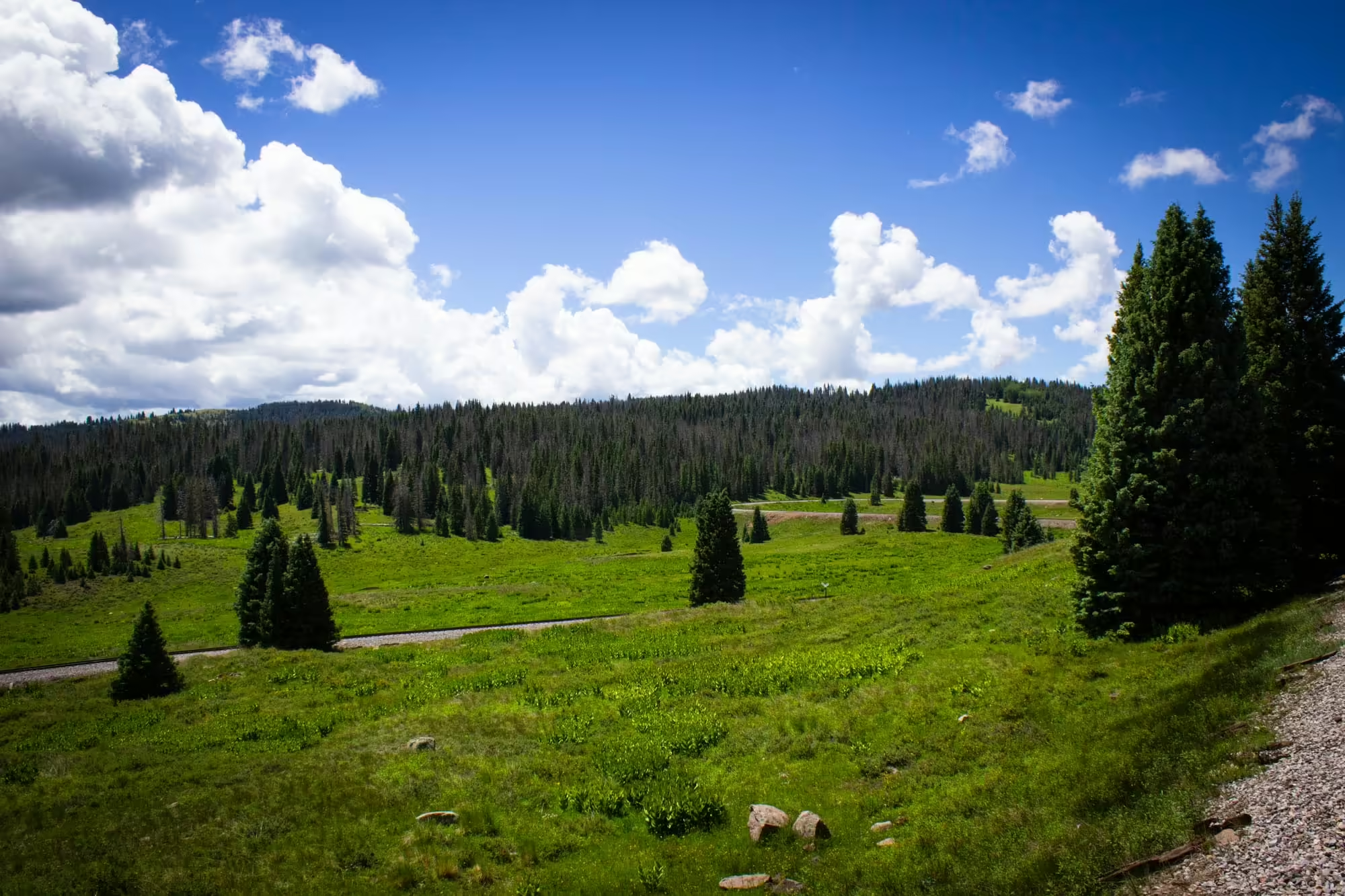

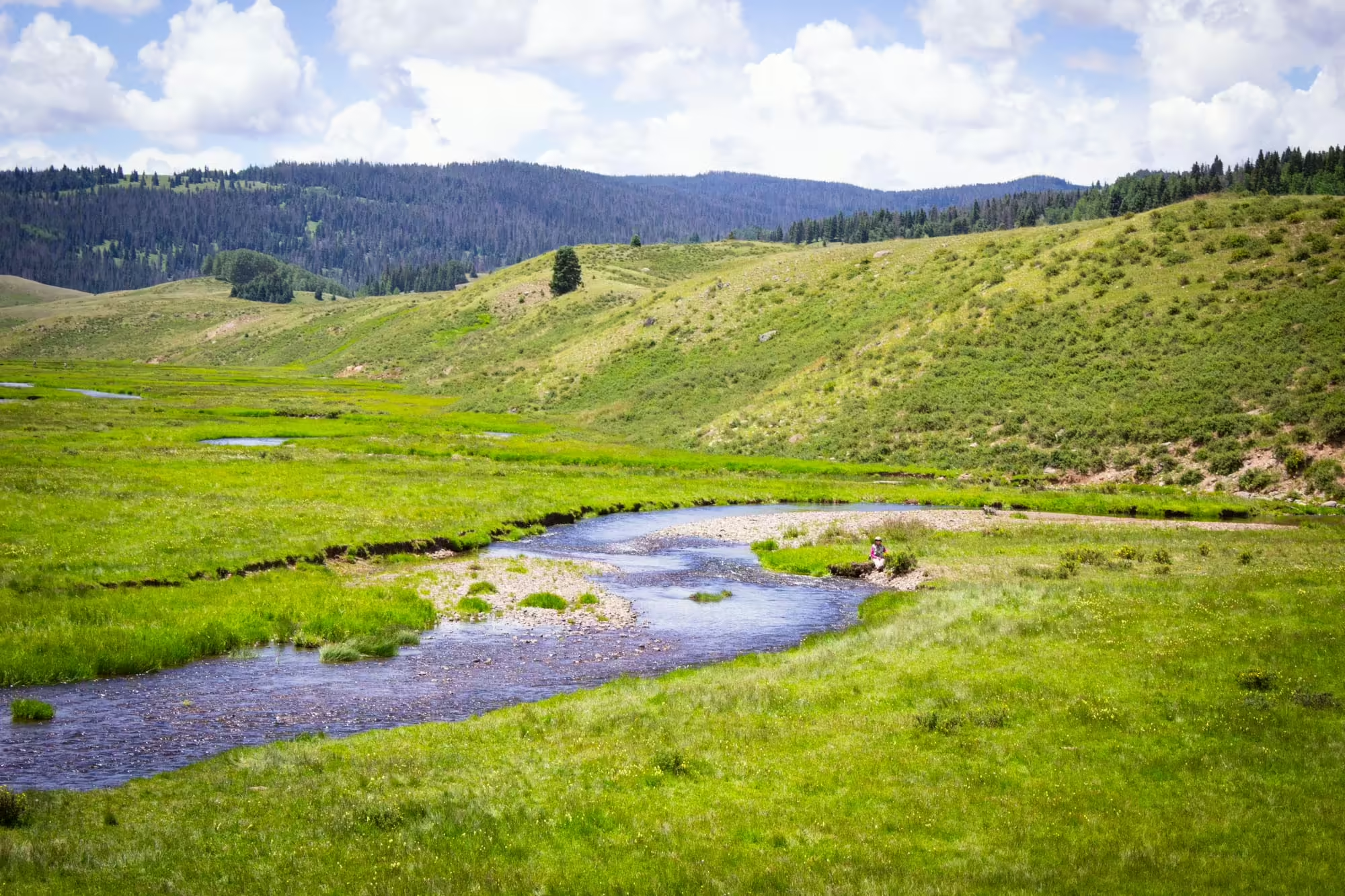
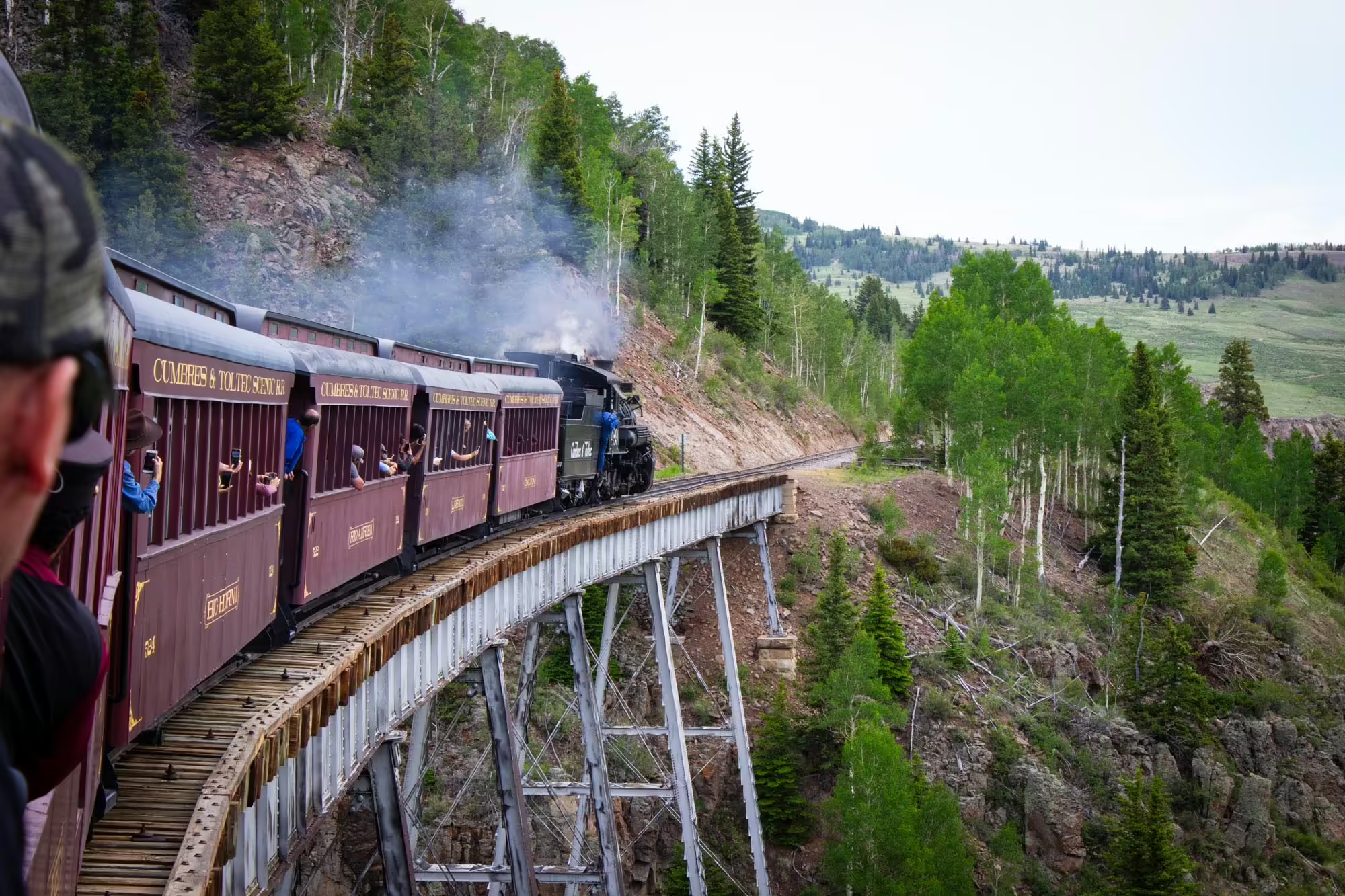
Over an hour into the ride we finally reached the summit of Cumbres Pass and stopped for the engine to take on water, a quarter of our ride completed.
After Cumbres Pass, the line descended a bit down to Rio de Los Pinos and nestled into a valley. While the grade no longer put on the show, the views were still spectacular.
Emerging from the valley, we ran alongside a cliff and had several military aircraft fly over our heads. Apparently, the Air Force likes to use the railroad as simulated target practice. I’m still not quite sure how to take that information.
Finally, we pulled into Osier and stopped for lunch.
Lunch in Osier
One of the best parts about the trip is lunch because, you know, food is nice. And when the trip takes over six hours to complete it’s great to be able to have a meal at some point.
Unlike box lunches you apparently get on the Durango and Silverton Narrow Gauge Railroad (a sister railroad of the C&TS), the railroad cooks a barbeque lunch at the halfway point in Osier. You have a selection of different meats and sides as well as a nice dessert.
And you get to eat it inside a nearly built cafeteria building, which is a great break from the elements.
Plus, if your train arrives early, which ours did, you can watch the opposite train arrive and see them swap the engines.

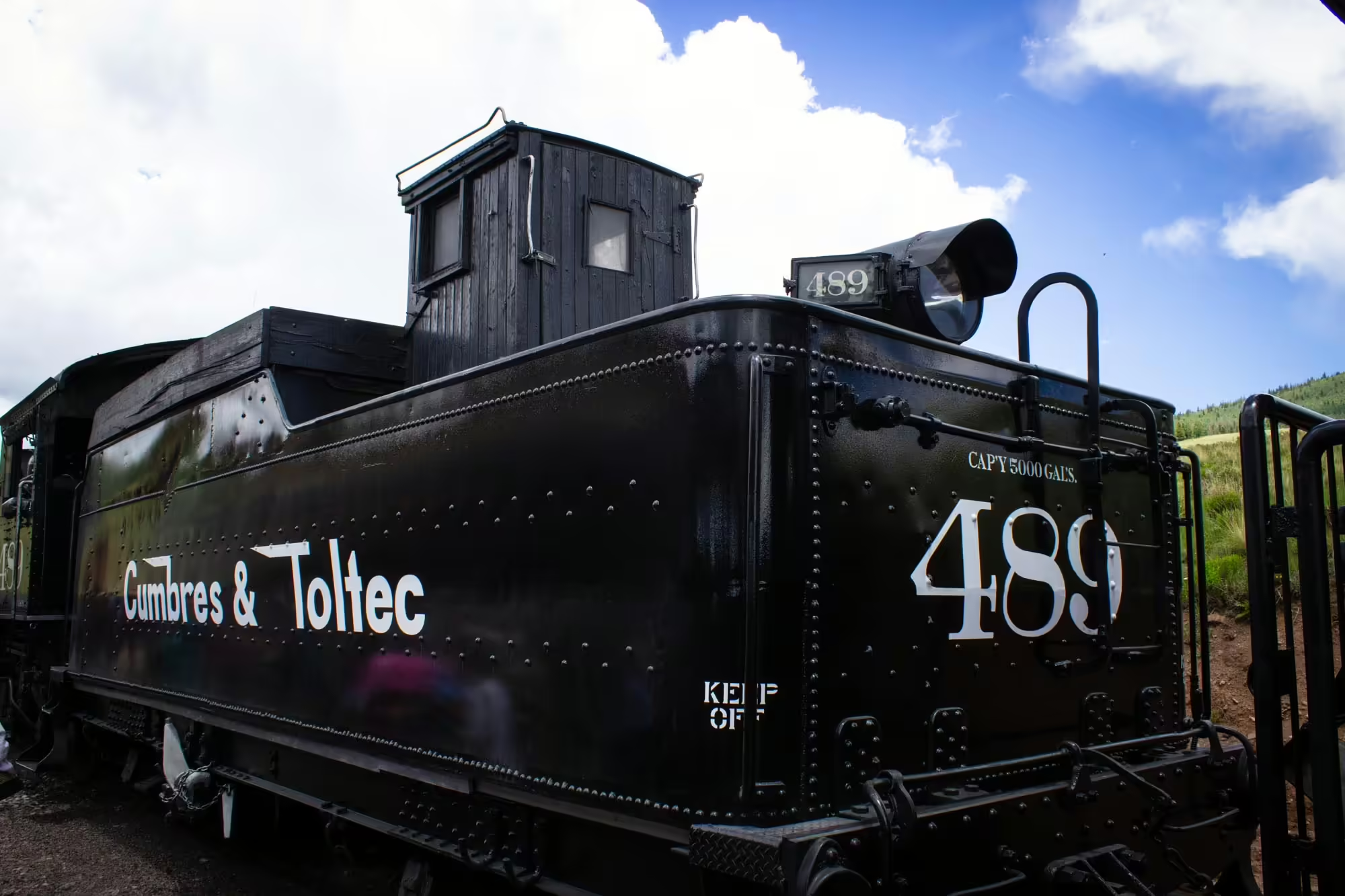
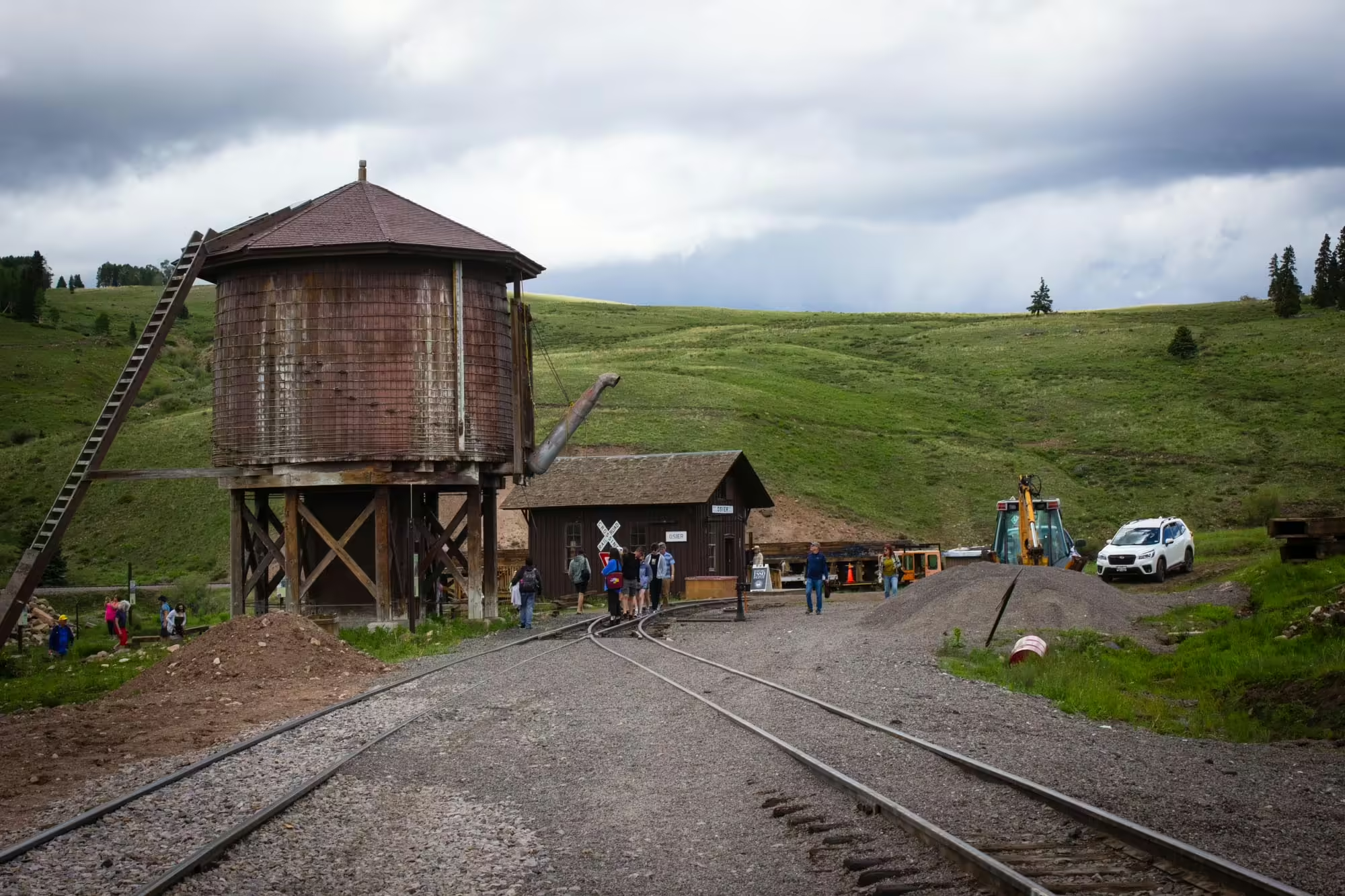
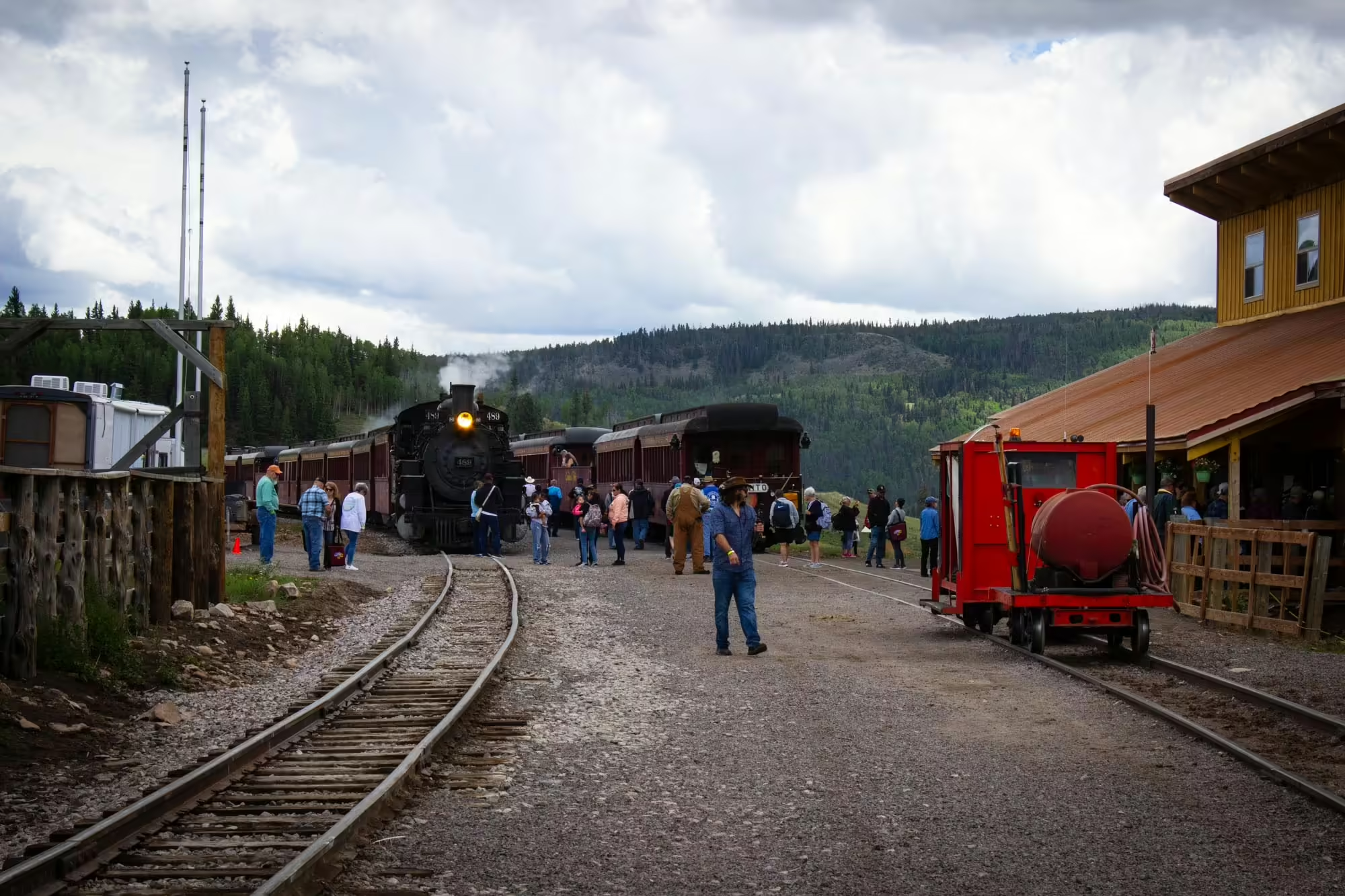
After lunch, we had time to walk around the area to see refurbished buildings looking just as they would when the D&RGW ran revenue trains through the area.
Also, this is the point where you can board the opposite train to get back to where you started the day if you want.
But we continued on to the eastern side of the San Juan Mountains and Antonito.
Twists and Turns Around Toltec Gorge
After lunch came probably the most scenic portion of the entire trip: Toltec Gorge.
The train runs atop the gorge, with a 700-plus foot drop down to the canyon floor and Rio de Los Pinos below. It’s equal parts amazing nature and amazing engineering thinking about how they were able to get the line to run on the side of the gorge’s walls.
There’s also a monument to President James Garfield, which seems a bit random until you realize he was assassinated in 1881 when this part of the line was built.
Before long we were headed through the first of two tunnels on the line and moving away from the gorge. From here the line began to twist along the side of the mountains with more rock formations than the first half of the trip as we cut into the terrain more.

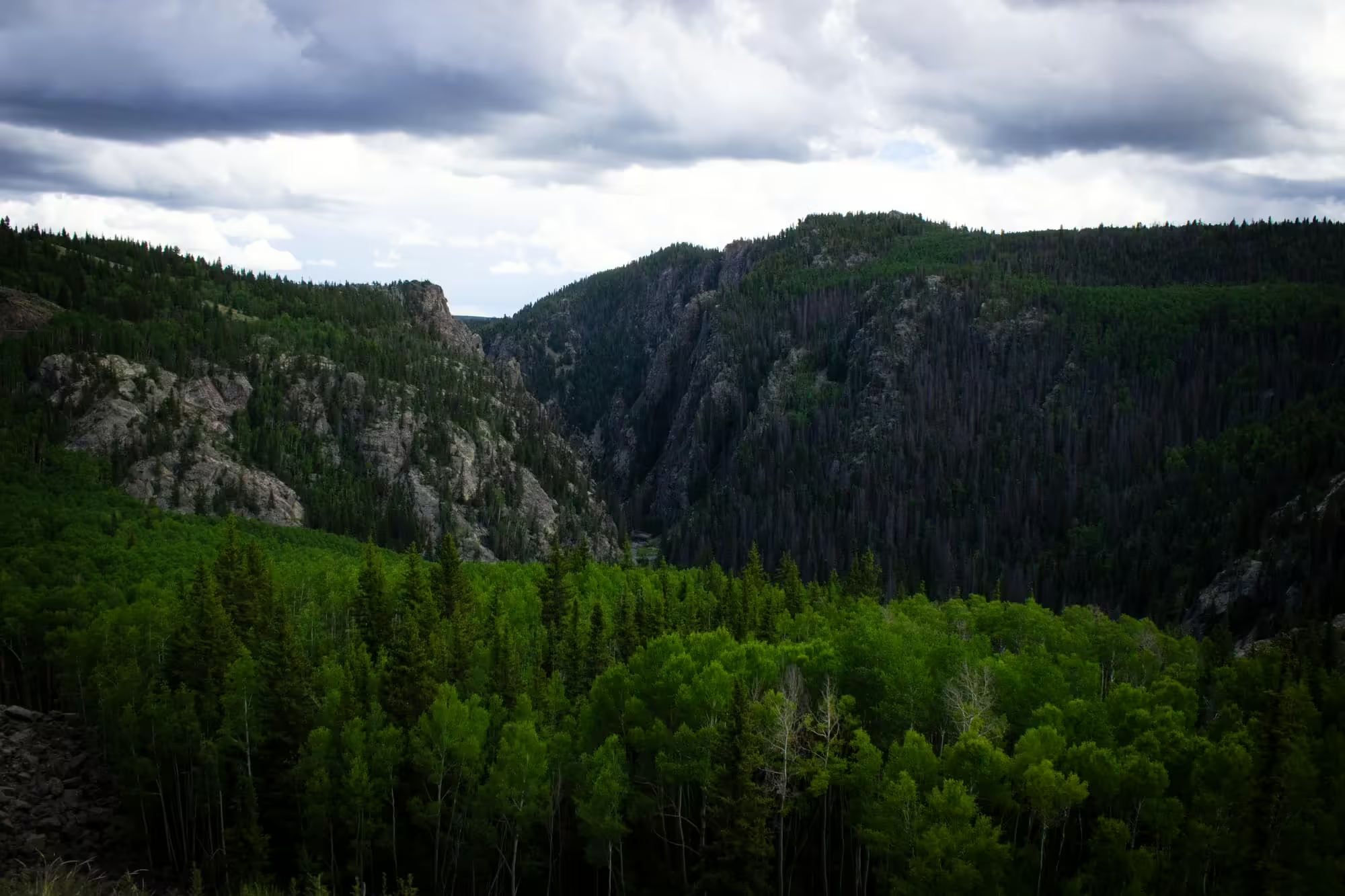
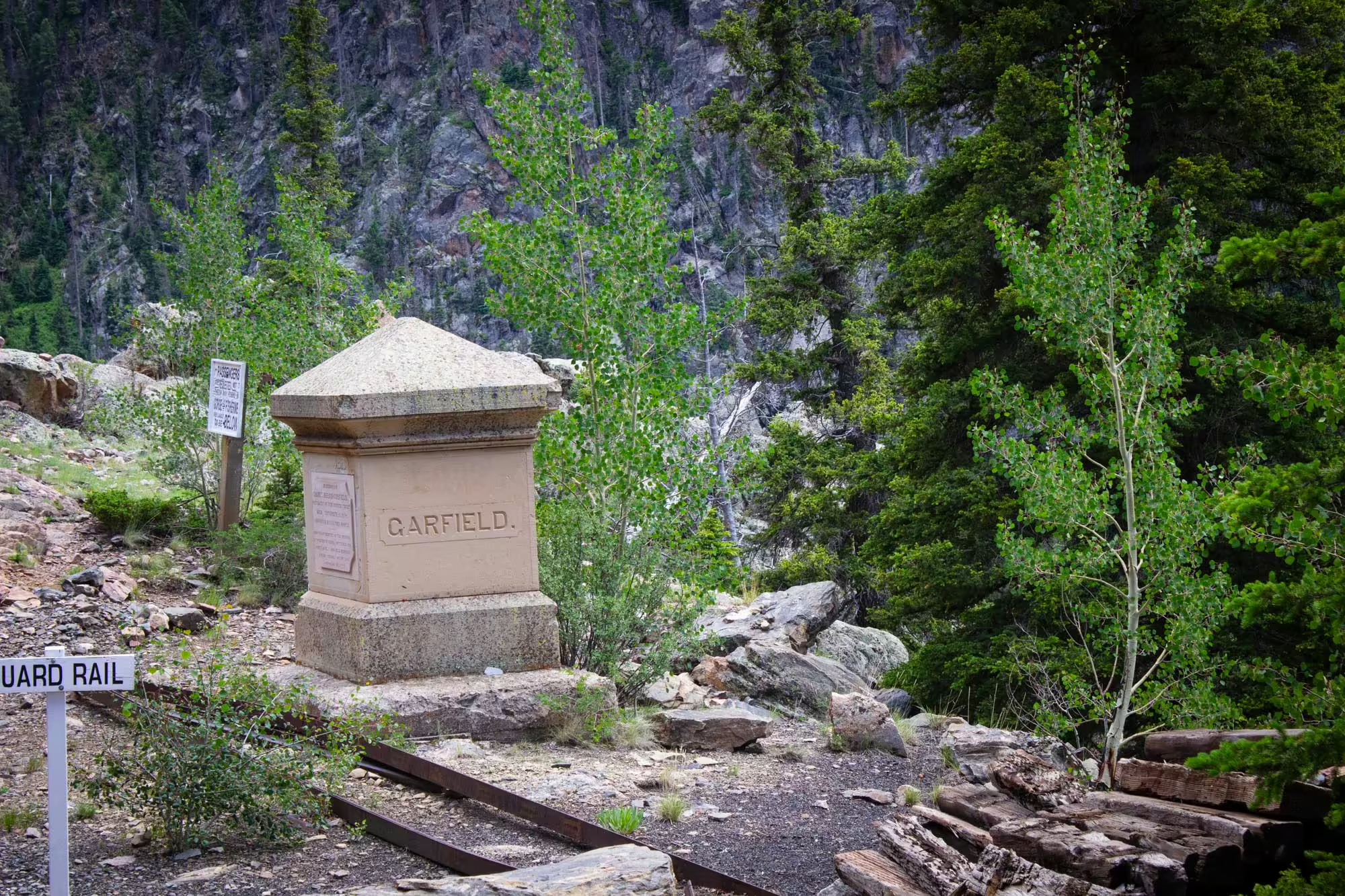

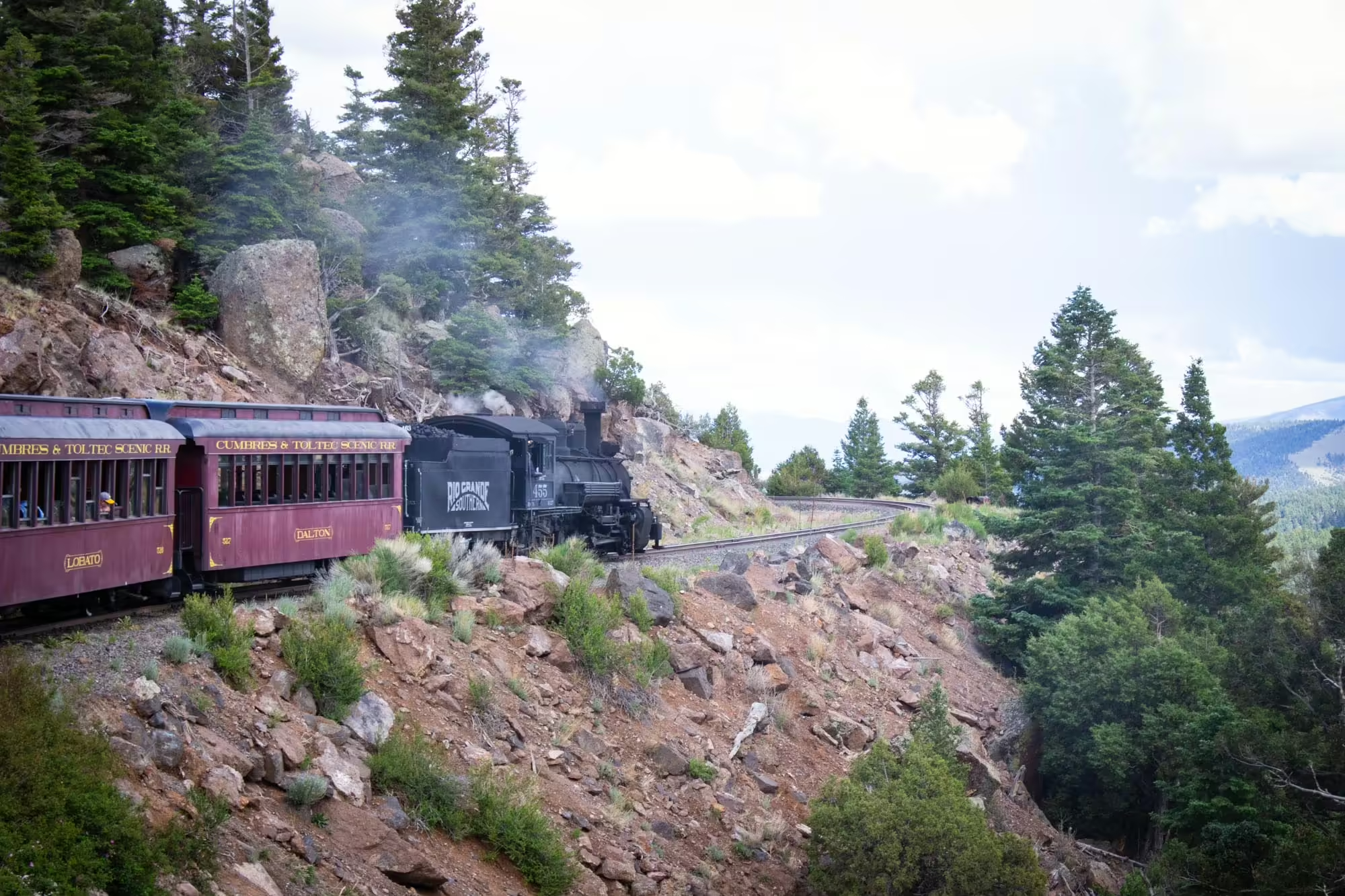
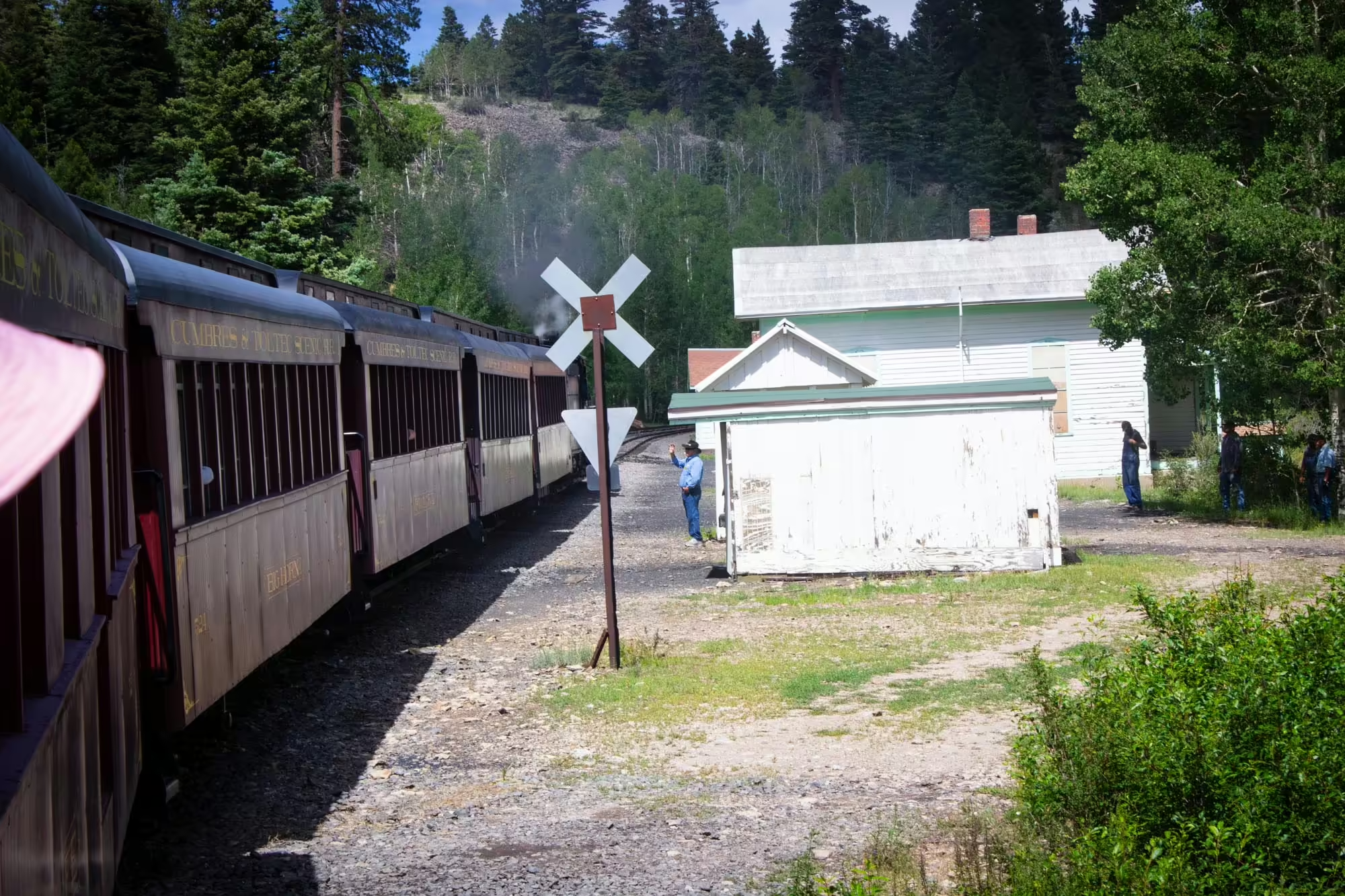
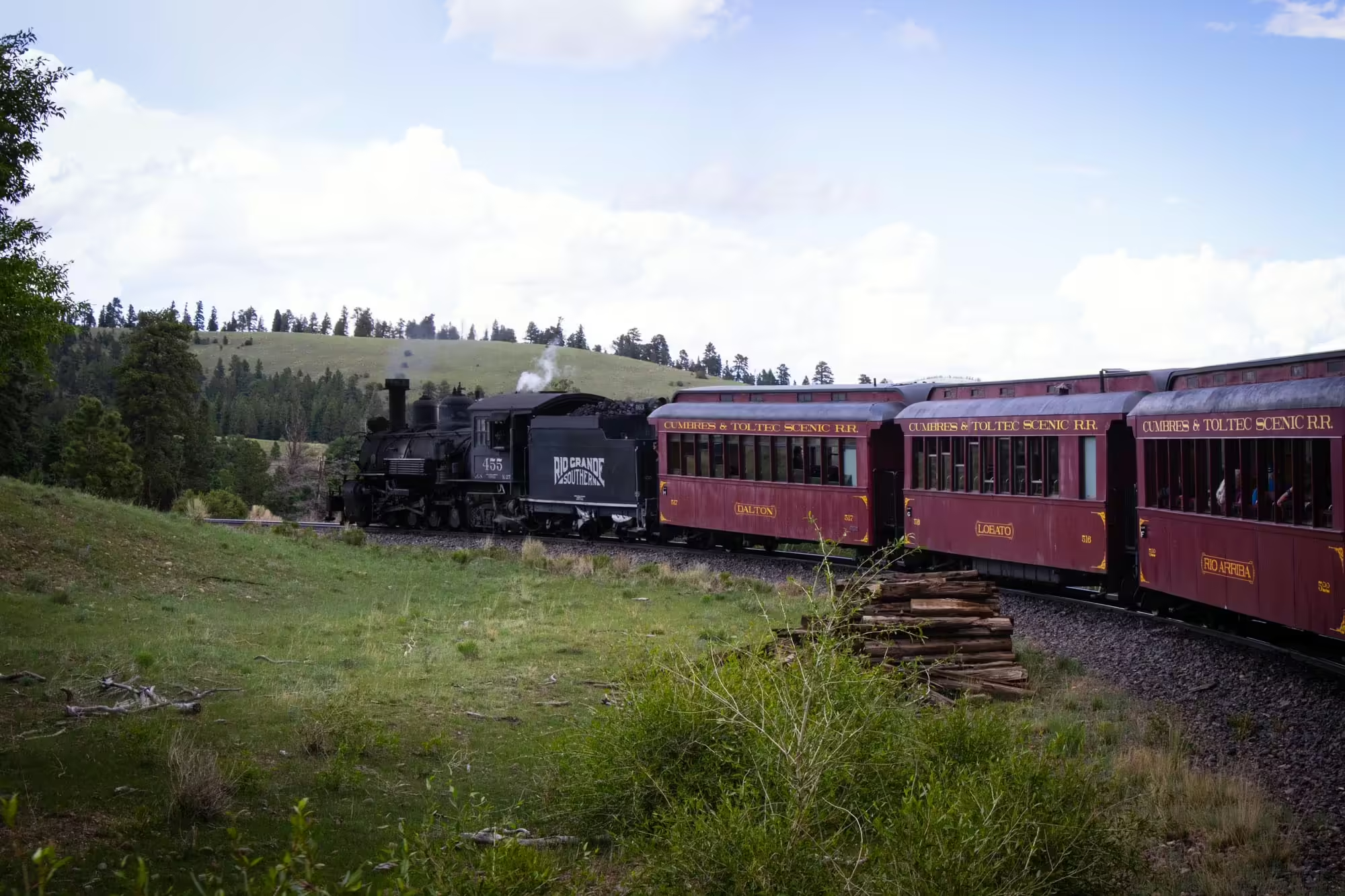
We also left State Highway 17 behind, meaning this was only a view you can get from the railroad (or by hiking if you’re adventurous). And the views were spectacular. From this point we could really see the San Juan Mountains in all of their glory.
Before long we reached Sublette on the railroad with refurbished railroad buildings and bunkhouses that track crews would stay at when performing maintenance of way work on the line. Here we stopped one last time for more water for the engine before finishing the last quarter of the trip.
Rain in the San Luis Valley
As we got to the Big Horn Wye, rain began to fall and we made a dash back to our seats in the coach car.
It was just at the right time too as minutes later the few drops we felt became a deluge of rain.
The curtain of rain washed out our view of the area as we chugged along the last miles of the trip, and trying to avoid drops of water leaking through the roof kept us a bit preoccupied. The good news is that by this point, the scenery wasn’t as good as the first 75 percent of the ride.
We were now firmly in the San Luis Valley, located between the San Juan and Sangre de Cristo Mountains. The terrain flattened out completely, allowing the train to really stretch its legs on the run into Antonito.
Roughly 45 minutes later we arrived at the station in Antonito with the rain thankfully backing off considerably. We disembarked from the train and dodge rain drops to the charter bus waiting to take us back to Chama.
What a simply incredible ride!
Learn More About the Cumbres and Toltec Scenic Railroad
Want to learn more about both the ride and the storied history of the San Juan Extension and Cumbres and Toltec Scenic Railroad? Check out this longform story I wrote about the line for the perfect deep dive into this crown jewel of the Denver and Rio Grande Western’s narrow gauge lines.
Tips for Riding the Cumbres and Toltec Scenic Railroad
If you’re thinking about or planning to ride the Cumbres and Toltec Scenic Railroad, here are some tips for your visit based on my experience.
Plan for Early July or Go in Fall
Any time is a great time to ride the C&TS, but there are two best times to ride the line.
The first is in early July. By this point, the mountains should be lush with green trees and plants, especially if the monsoon season is generous to the area. Plus, with elevations between 7,000 and 10,000 feet, high temperatures should be in the mid-80s at most. That makes for a super pleasant ride with great scenery.
The second, and perhaps best, time is late September to October. By this point fall colors are starting to show on the mountains, including the aspen trees turning a stunning gold color. Your entire trip will be filled with absolutely stunning views and colors that make for spectacular photos.
If you do plan to go on a fall trip, make sure to book your tickets well in advance. Those trips can sell out quickly as it’s a super popular time on the railroad with some excursions needing a second engine to help pull more cars.
Stand in the Gondola Car
The open air gondola car is probably the most underrated part of the whole trip.
Located about halfway through the train, it gives you a 360 degree view of the entire ride. You’re free to move from side to side to get a glimpse of the most picturesque parts of the ride no matter where they are. It’s honestly the best place to take photos from, plus on a perfect day, it feels amazing to just stand out there instead of sitting inside a normal passenger car.
Just be warned that there are no seats in the car and you will have to stand the entire time you’re out there. Plus, if you’re going in summer, make sure you put on sunscreen to avoid sunburns. Learned that one the hard way.
Still, it’s the best car to enjoy the ride through the mountains.
Listen to the Docents for History
One of the more underrated parts of the ride on the C&TS is the docents that walk around the train to talk about the ride.
These are members of the Friends of the Cumbres and Toltec Scenic Railroad who volunteer their time to ride the trains and talk about the history of both the line itself as well as the surrounding area.
It’s definitely worth taking the time to listen to what they have to say, ask them questions you might have and learn something in addition to enjoying the amazing scenery.
Talk to Other Passengers
Also, you’re riding a train with a bunch of other passengers. And you’re on this train together for roughly six hours.
So you should take the time to talk with them and start conversations. I know this might be a challenge, especially for those of us who are more introverted, but it can be worth it.
You never know who you might meet or what connections you might make during your conversations with people. Plus, it makes the ride much more pleasant.
So get out of your comfort zone and talk to your fellow passengers.
Put the Camera Down and Enjoy the Ride on the Cumbres and Toltec Scenic Railroad
Finally, if you’re taking photos on the ride, make sure that you put the camera down for a while and just enjoy the ride.
It’s very easy to just keep snapping away since there’s so much to photograph along the entire line. But it’s also really easy to miss things because you were looking through a viewfinder and not taking it all in.
So make sure you take some time where you put your camera down and just look at everything there is to see on the railroad. Feel the cool breeze against your face. See the sheep, cattle, wild horses, deer and other wildlife in the area. Learn the history of the line, and talk with your fellow passengers.
By the end of the trip, you’ll not only have spectacular photos, but also great stories to tell and a much better experience.
All aboard!



